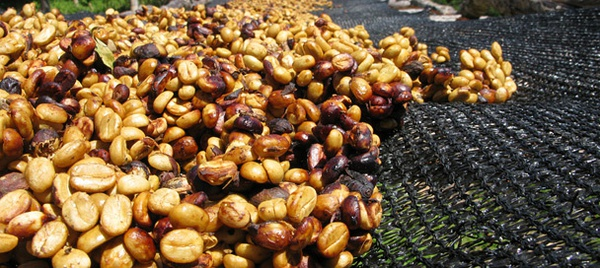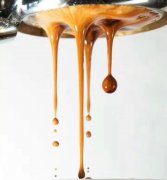How do you distinguish between yellow honey, red honey and black honey? why is there black honey, red honey, yellow honey?
For professional baristas, please follow the coffee workshop (Wechat official account cafe_style)
Yellow honey, red honey, black honey treatment, where is the difference?
When you want to buy honey-treated coffee, you usually have the choice of yellow honey, red honey and black honey. You may have heard of these honey treatments to retain the percentage of pectin layer, and what does this mean?
Coffee farmers will classify coffee, some will retain less pectin layer so that they can be exposed faster, while others will retain more pectin layer and require longer exposure time. Yellow honey (about 25% of the pectin layer) in order to finish faster during exposure, it must be carried out in the least shaded environment (clouds, shade trees) to get a yellow appearance. Red honey (which retains about 50% of the pectin layer) takes longer and needs some shelter to expose itself. Black honey (which retains about 100% of the pectin layer) is usually covered in order to extend the exposure time.
Which is better, yellow honey, red honey or black honey?
It may be that black honey is better, the flavor of honey treatment will bring more fine and deep influence because of the residual sugar in pectin layer, and the more residual pectin layer, the stronger the flavor. (this is the view of the author of this article. Coffee seedlings think that each treatment has its own flavor, which varies from person to person. )
However, for coffee producers, they have to face another commercial consideration. Although the benefit of black honey treatment is that better quality and better price coffee can be produced, the risk and cost will also be greatly increased. So that it may affect the willingness of farmers to use black honey treatment. The longer the coffee is exposed to the sun, the more likely it is to breed bacteria during fermentation, resulting in defective moldy beans. The beans need to be flipped more frequently and take up more exposure space, up to twice as much as yellow honey treatment. Not only to make high-quality coffee, but also to let coffee farmers produce the most profitable coffee.

Important Notice :
前街咖啡 FrontStreet Coffee has moved to new addredd:
FrontStreet Coffee Address: 315,Donghua East Road,GuangZhou
Tel:020 38364473
- Prev

How to clean the breville coffee machine breville coffee machine lights are on
Professional barista communication Please pay attention to the coffee workshop (Wechat official account cafe_style) the light is on to remind you to clean the coffee machine. 1, remove the filter screen from the coffee brewing handle and replace the perforated filter cup with professional anti-cleaning. 2. Put 5 grams of special cleaning powder for the coffee machine into the non-hole filter cup, insert the brewing handle into the brewing head until it is fully closed, turn on the cleaning switch for 10 seconds and press the key to stop.
- Next

Why does Italian coffee need the function and skill of pressing powder?
Professional baristas Communication Please follow the Coffee Workshop (Wechat official account cafe_style) baristas all know that when using an Italian coffee machine, the hot water brewed has about 9 atmospheres (of course, this is not a fixed value, there are 12 atmospheres or more), there is a lot of pressure, and when the water penetrates the coffee cakes, the water is inert. What is inertia?
Related
- Beginners will see the "Coffee pull flower" guide!
- What is the difference between ice blog purified milk and ordinary milk coffee?
- Why is the Philippines the largest producer of crops in Liberia?
- For coffee extraction, should the fine powder be retained?
- How does extracted espresso fill pressed powder? How much strength does it take to press the powder?
- How to make jasmine cold extract coffee? Is the jasmine + latte good?
- Will this little toy really make the coffee taste better? How does Lily Drip affect coffee extraction?
- Will the action of slapping the filter cup also affect coffee extraction?
- What's the difference between powder-to-water ratio and powder-to-liquid ratio?
- What is the Ethiopian local species? What does it have to do with Heirloom native species?

